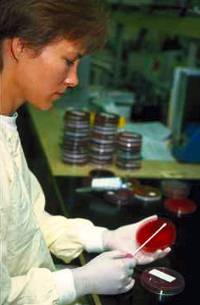
An experiment which forced E. coli bacteria to adapt or perish showed that, in a pinch, they were capable of improvising a novel molecular tool to save their skins.
“The bacteria reached for a tool that they had, and made it do something it doesn’t normally do,” said James Bardwell, an associate professor of molecular, cellular and developmental biology at the University of Michigan. “We caught evolution in the act of making a big step.”
This big step also turns out to be a new way of making molecular bolts called disulfide bonds, which are of particular interest to the biotechnology industry. Disulfide bonds are stiffening struts in proteins that also help the proteins fold into their proper, functional, three-dimensional shapes.
In a paper published in the journal Science, a joint research team at the University of Michigan and the University of Texas describes how a resourceful bacterium was able to develop an entirely new way to make disulfide bonds. This restarted its motor and enabled it to move toward food before it starved to death.
George Georgiou, a professor of chemical and biomedical engineering at the University of Texas, used a strain of mutant bacteria developed by Bardwell that had lost their ability to make disulfide bonds. These disulfides are critical for the ability of the bacteria’s propeller-like swimming motor, the flagellum, to work.
The bacteria used in the experiment were forced to use a protein called thioredoxin – which normally destroys disulfide bonds – to make the bonds instead. In a process similar to natural selection, UT graduate student Lluis Masip made random alterations in the DNA encoding thioredoxin and then subjected thousands of bacteria to the swim-or-starve test. He wanted to see if an altered version of thioredoxin could be coerced to make disulfides for other proteins in the bacteria.
To the researchers’ surprise, a mutant carrying only two amino acid changes, amounting to less than 2 percent of the total number of amino acids in thioredoxin, restored the ability of the bacteria to move. The altered thioredoxin was able to carry out disulfide bond formation in numerous other bacterial proteins all by itself, without relying on any of the components of the natural disulfide bond pathway. The mutant bug managed to solve the problem in time and swim away from starvation and multiply.
When Bardwell heard Georgiou discuss the experiment at a scientific meeting in France in spring 2002, he asked if they could collaborate on figuring out what, precisely, the successful bacterium had managed to accomplish.
Bardwell’s team found that the two amino acid substitutions in thioredoxin cause a remarkable transformation: they result in the binding of two iron and two sulfur atoms that form a complex that bridges two thioredoxin protein molecules. This iron-sulfur cluster was shown to be necessary for the new enzyme to form disulfides. Iron-sulfur complexes occur in many enzymes, but never before had such a functional iron-sulfur complex been introduced into a protein as a result of laboratory evolution.
Bardwell likens the new pathway for disulfide bond formation to engineering. “People often speak of Computer Assisted Design (CAD), where you try things out on a computer screen before you manufacture them. We put the bacteria we were working on under a strong genetic selection, like what can happen in evolution, and the bacteria came up with a completely new answer to the problem of how to form disulfide bonds. I think we can now talk about Genetic Assisted Design (GAD).
“The naturally occurring enzymes involved in disulfide bond formation are a biological pathway whose main features are the same from bacteria to man,” Bardwell said. “Understanding how disulfide bond formation occurs and figuring out new ways to make it happen could be important to numerous disease states, like Alzheimer’s and cystic fibrosis, that result from defective protein folding.”
Disulfides are also vital for the activity of most proteins that are injected into people for medical purposes, such as insulin and TPA, a blood clot dissolver that is injected into people who are having heart attacks and strokes.



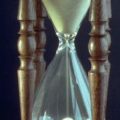
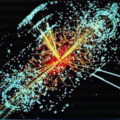




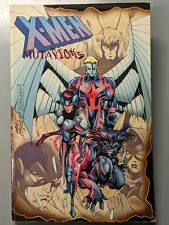


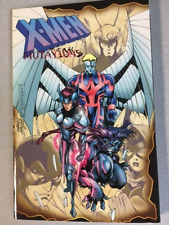

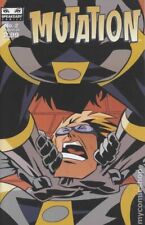



Comments are closed.